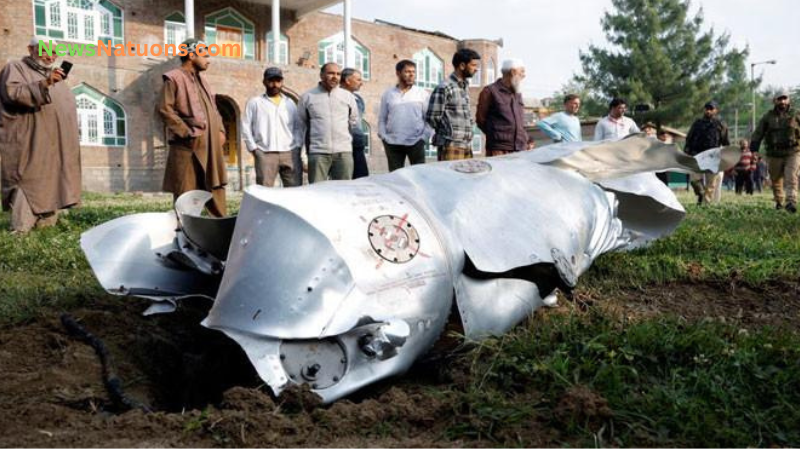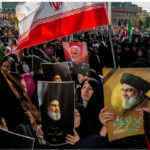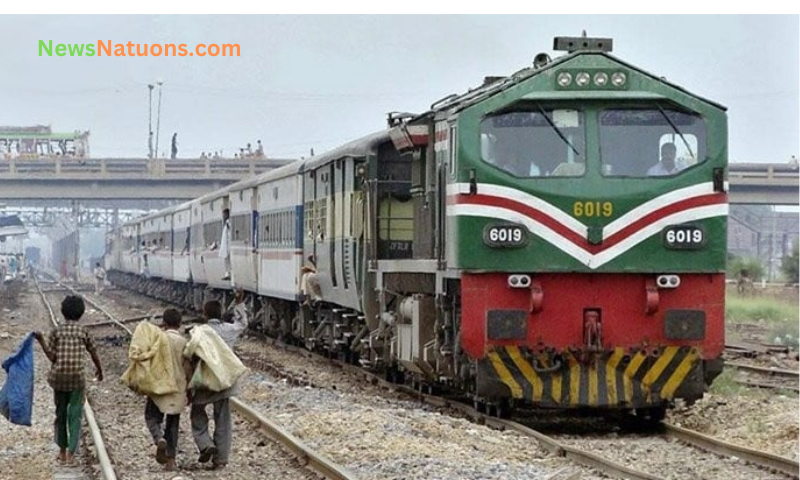Recently, startling revelations have come to light regarding the fate of the Indian Air Force pilots whose fighter jets were shot down by the Pakistan Air Force during a recent military conflict. The incident has sparked considerable interest across South Asia, especially after new information was shared in a popular podcast hosted by Geo TV.
Renowned Pakistani journalist and anchorperson Shehzad Iqbal appeared on Geo Podcast, where he was interviewed by host Mubashir Hashmi. During the conversation, Mubashir asked the pressing question that many had been wondering since the skirmishes between the two countries: what happened to the Indian pilots whose aircraft were brought down?
Deaths and Injuries Among Indian Pilots Confirmed
Responding to the inquiry, Shehzad Iqbal confirmed that two Indian pilots had died as a result of their planes being shot down, while three others were injured and are currently receiving medical treatment. This information, which had not been publicly confirmed before, sheds light on the human cost of aerial warfare and the high stakes involved in the conflict between the two nuclear-armed nations.
Shehzad explained that he had received this sensitive information directly from sources within the Pakistan Air Force (PAF). He further elaborated on how these details reached Pakistani authorities in the first place. According to him, the PAF relies on a robust intelligence network that includes on-ground intelligence as well as verification from multiple intelligence agencies. This cross-checking ensures that the information is not only timely but also highly accurate.
The Intelligence Network Behind the Information
Shehzad Iqbal emphasized that the efficiency and reach of Pakistan’s intelligence system played a crucial role in acquiring these updates about the Indian pilots. He stated that when he asked the Air Force how such specific information became available, he was told it was thanks to real-time intelligence coordination across various platforms. Ground intelligence agents played a critical role in observing the crash sites, monitoring enemy movements, and reporting any survivors or fatalities.
This tight network of information sharing, according to Iqbal, gives the PAF a strategic advantage in conflict situations, despite having significantly fewer resources than its Indian counterpart.
Pakistan’s Lower Budget, Yet Higher Efficiency
An interesting part of Shehzad’s conversation focused on the military budgets of both countries. He pointed out the stark contrast: Pakistan operates with a defense budget of about $9 billion, while India’s defense spending reaches a staggering $86 billion. Despite this massive difference, Pakistan’s air defense system has proven to be more advanced and effective in certain combat situations.
When Shehzad raised this question with PAF personnel, he was told that quality often outweighs quantity. The systems, training, and strategic planning of Pakistan’s air force are not only modern but also deeply adaptive. The recent military conflict demonstrated this when Pakistani fighter jets outmaneuvered Indian jets in the sky, successfully taking down several of them without suffering any losses in return.
Aerial Battle: 40 Pakistani Jets vs. 80 Indian Jets
During the actual aerial engagement, the odds were clearly stacked against Pakistan. According to Shehzad Iqbal, the PAF deployed 40 jets while India sent in 80. Despite being outnumbered two to one, the Pakistani jets not only held their ground but also dominated the skies in a way that many international analysts found surprising.
Not a single Pakistani aircraft was lost during the encounter. Furthermore, Indian jets failed to lock on to any of the PAF planes, meaning they could not even fire their missiles effectively. In contrast, the Pakistani Air Force was able to successfully target and destroy Indian fighter jets, including some of the highly acclaimed Rafale aircraft.
Indian Media’s Silence and Public Curiosity
What has further fueled speculation is the near-total silence from Indian media and officials regarding the status of the pilots. While there were initial reports of missing or downed jets, official confirmation about pilot casualties was never provided. The recent disclosures by Shehzad Iqbal have not only answered lingering questions but have also exposed a gap in transparency on the Indian side.
The lack of acknowledgment has led to frustration among the Indian public and has sparked debates on social media platforms, with many demanding clarity on the actual losses incurred during the operation.
A Testament to Pakistan’s Air Superiority
This recent episode serves as a reminder of the growing capabilities of Pakistan’s Air Force. The way they handled the situation—with limited resources, fewer jets, and a tighter budget—speaks volumes about the effectiveness of their training, technology, and intelligence.
Pakistan’s air defense strategy continues to evolve in response to modern warfare challenges. The successful operation against Indian jets is now being studied by military experts globally as an example of how disciplined strategy and superior coordination can overcome numerical disadvantages.
حال ہی میں پاک بھارت کشیدگی کے دوران پاکستانی فضائیہ کی جانب سے مار گرائے گئے بھارتی جنگی طیاروں کے پائلٹس کے بارے میں اہم انکشافات سامنے آئے ہیں۔ اس موضوع پر ہونے والی گفتگو نے سوشل میڈیا اور صحافتی حلقوں میں خاصی توجہ حاصل کی ہے، خصوصاً جب مشہور اینکر پرسن شہزاد اقبال نے اس معاملے پر جیونیوز کے پوڈکاسٹ میں بات کی۔
شہزاد اقبال نے میزبان مبشر ہاشمی کے سوال کا جواب دیتے ہوئے بتایا کہ انڈین ایئر فورس کے تباہ ہونے والے طیاروں کے دو پائلٹس جاں بحق ہو چکے ہیں جبکہ تین زخمی حالت میں زیر علاج ہیں۔ یہ بات اب تک سرکاری طور پر بھارت کی طرف سے نہیں بتائی گئی تھی، لیکن اب پاکستان کی طرف سے یہ تصدیق کی جا رہی ہے۔
انٹیلیجنس ذرائع سے حاصل شدہ معلومات
شہزاد اقبال نے مزید بتایا کہ انہوں نے جب پاک فضائیہ کے اہلکاروں سے یہ معلومات کیسے حاصل ہوتی ہیں، اس بارے میں سوال کیا تو انہیں بتایا گیا کہ ان کے پاس مضبوط گراؤنڈ انٹیلیجنس نیٹ ورک ہے۔ اس نیٹ ورک کے ذریعے ابتدائی اطلاعات حاصل کی جاتی ہیں جن کی بعد ازاں دیگر انٹیلیجنس ایجنسیز سے تصدیق کی جاتی ہے۔
یہ مربوط نیٹ ورک پاک فضائیہ کو نہ صرف فوری اور درست معلومات فراہم کرتا ہے بلکہ فیصلہ سازی کے عمل کو بھی تیز اور مؤثر بناتا ہے۔ یہی وجہ ہے کہ دشمن کے طیاروں اور پائلٹس کی صورتحال کے بارے میں تفصیلات پاکستانی حکام تک بروقت پہنچ جاتی ہیں۔
دفاعی بجٹ کا فرق لیکن صلاحیت میں برتری

شہزاد اقبال نے پاک فضائیہ کے اہلکاروں سے سوال کیا کہ جب پاکستان کا دفاعی بجٹ صرف 9 بلین ڈالر ہے اور بھارت کا بجٹ 86 بلین ڈالر ہے تو پھر دونوں ممالک کی سیکیورٹی میں فرق کیسے پیدا ہوتا ہے؟ اس پر انہیں جواب ملا کہ بجٹ کا فرق ضرور ہے لیکن پاکستان کے پاس موجود دفاعی نظام بھارت سے کہیں زیادہ ایڈوانس اور موثر ہے۔
اس بات کا واضح ثبوت حالیہ فضائی جنگ میں دیکھنے کو ملا، جہاں پاکستان کی فضائیہ نے اپنے محدود وسائل کے باوجود بھارت کو مؤثر جواب دیا اور کئی بھارتی طیارے تباہ کیے۔
فضائی جنگ میں معجزہ نما کارکردگی
اس جنگ میں پاک فضائیہ کے صرف 40 جہاز شامل تھے جبکہ بھارتی فضائیہ کے 80 جہاز میدان میں تھے۔ اس کے باوجود پاکستان کے کسی طیارے کو نقصان نہیں پہنچا۔ بھارتی طیارے پاکستانی جہازوں کو لاک کرنے میں بھی ناکام رہے اور ایک بھی میزائل فائر نہیں کر سکے۔
دوسری طرف پاکستان نے نہ صرف بھارتی طیاروں کو نشانہ بنایا بلکہ رافیل جیسے جدید طیارے بھی گرائے۔ یہ سب کچھ پاک فضائیہ کی اعلیٰ تربیت، بہتر حکمت عملی اور جدید ٹیکنالوجی کی بدولت ممکن ہوا۔
بھارتی میڈیا کی خاموشی اور عوام کی بے چینی
بھارتی حکومت اور میڈیا کی جانب سے اس واقعے پر مکمل خاموشی اختیار کی گئی ہے۔ بھارتی عوام سوشل میڈیا پر مسلسل سوالات اٹھا رہے ہیں کہ حقیقت کیا ہے؟ پائلٹس کہاں ہیں؟ اور حکومت سچ کیوں نہیں بتا رہی؟
شہزاد اقبال کی جانب سے کیے گئے انکشافات نے اس خاموشی کو توڑا اور ایک نئی بحث کو جنم دیا ہے۔ عوام اب حقائق جاننے کے لیے مطالبات کر رہے ہیں، جبکہ حکومتی سطح پر کوئی واضح جواب تاحال نہیں دیا گیا۔
پاکستان کی فضائی برتری کا عملی مظاہرہ
یہ واقعہ ایک واضح مثال ہے کہ پاکستان نے کم وسائل کے باوجود اپنی پیشہ ورانہ مہارت، تربیت اور ٹیکنالوجی کے ذریعے ایک بڑی قوت کو شکست دی۔ پاک فضائیہ کی کارکردگی نہ صرف قوم کے لیے باعثِ فخر ہے بلکہ بین الاقوامی دفاعی ماہرین بھی اسے ایک قابلِ مطالعہ ماڈل قرار دے رہے ہیں۔
یہ ثابت ہو چکا ہے کہ اگر حکمت عملی درست ہو، انٹیلیجنس موثر ہو، اور ٹیکنالوجی کا درست استعمال کیا جائے تو وسائل کی کمی بھی رکاوٹ نہیں بنتی۔ پاکستان کی فضائیہ نے یہی کر کے دکھایا۔











